Partnering with the community creates more informed stakeholders, buy-in and public confidence.
With smoke testing, community residents, businesses and property owners may have concerns about what the process entails, whether the smoke is toxic and how they can prepare.
The following eight questions are often asked about the smoke testing process when its used to identify inflow and infiltration (I&I), including answers you can use to educate your public and key stakeholders! Prior to these eight questions, you’ll also find answers to questions regularly asked by city officials – such as the best time to plan and how to be inclusive with your outreach.
5 questions city officials may have about smoke testing
1. When should cities start planning for smoke testing?
Begin planning in December if not earlier to ensure you’re ready to undertake the process during the upcoming spring and summer. A substantial amount of preparation, planning and flexibility are required to implement successful smoke testing projects.
Being proactive is the best way to ensure you have the insight, planning and flexibility needed to lead the process without issue.
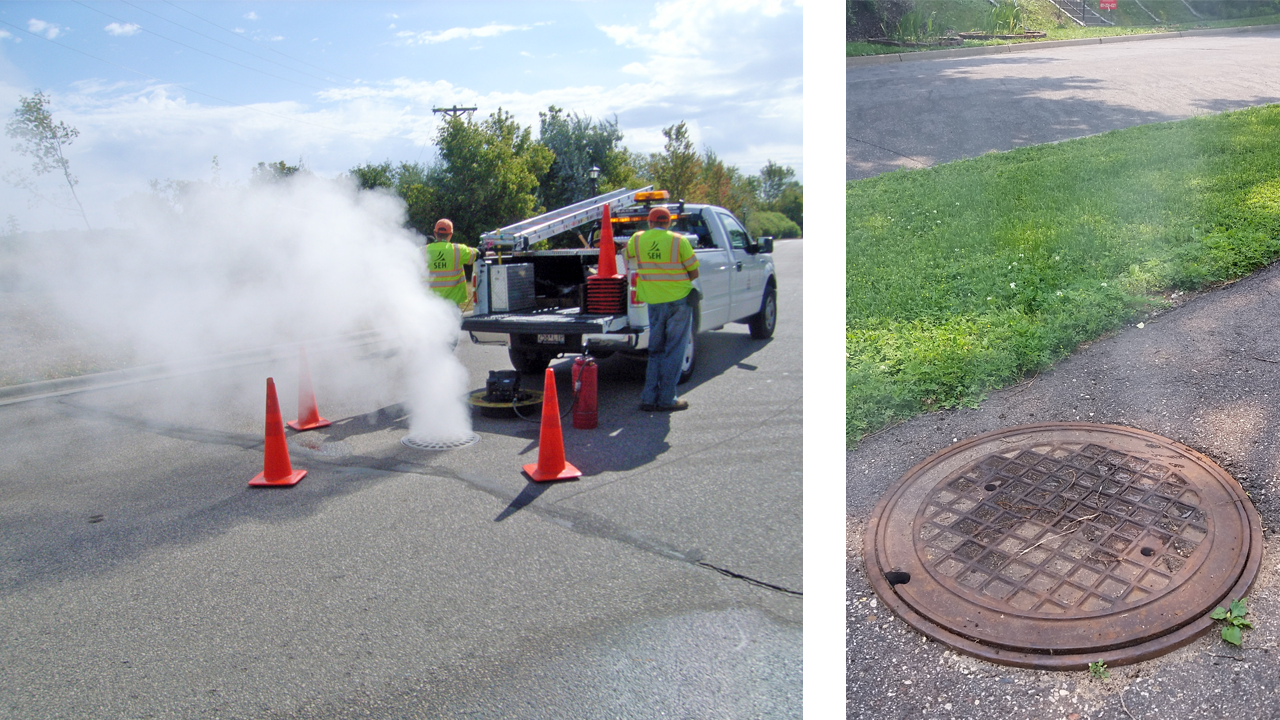
2. What’s the connection between smoke testing and GIS?
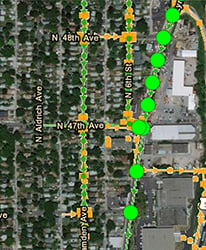
GIS also empowers communities to prioritize and coordinate future sewer rehabilitation projects. These projects can take place simultaneously with other road improvement or community development programs.
3. Why is smoke testing most often completed in the summer?
Summertime provides the optimal conditions to receive the most accurate results. Dry weather conditions lower groundwater conditions, allowing the smoke from smoke testing to travel further and provide easier access out of the system. If your community is located in a drier climate, you have more flexibility in terms of the best times to test throughout the year.

4. What if English is your residents’ second language, or they don’t speak English?
It’s important to be sensitive and proactive with issues such as residents who speak different languages and have different ways of life. Work closely with your consultant partner(s), city staff and leaders within your communities to create educational resources that meet these uniquities – one example is to consider developing a dedicated English as a Second Language (ESL) website.
At SEH, we often partner with cities to help them develop such websites, as well as other plans and resources to engage non-English speaking communities. These communities often include Hispanic, Hmong, Russian and Somalian populations. In our experience, we’ve found it helpful to engage community leaders/elders directly or bring together community leaders and city staff to facilitate discussions – ultimately to find the appropriate messaging, remain sensitive to the unique differences of each culture, educate the community and gain buy-in.
Intentional, sensitive community outreach plays an important role in helping all residents prepare and be clear on what’s taking place. Meet these residents where they’re most comfortable. Seek understanding. Listen. Regardless of the approach you take, it’s important to have a plan in place to engage all audiences.
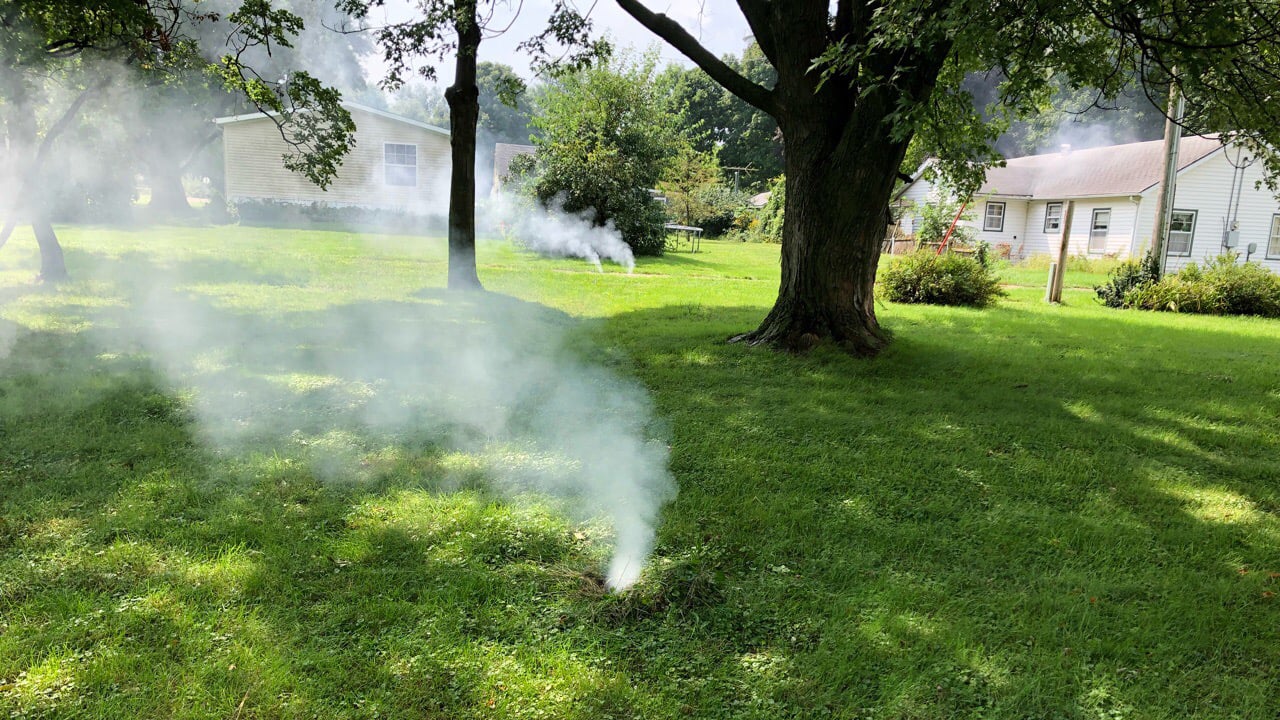
5. What are benefits of smoke testing to our community?
I&I reduces pipe capacity and pipe service and can produce future operations and maintenance challenges. Smoke testing is an efficient and low-cost method for avoiding these challenges.
Smoke testing provides you with the information needed to identify and address problem areas before they become deeper, perhaps permanent issues. Proactive methods for identifying I&I can save cities unnecessary repair expenses and ensure the health and safety of community residents.
8 questions your residents will have about smoke testing
1. What is the reason for smoke testing?
Smoke testing is undertaken to find leaks before they become larger problems. It’s one of the several investigative methods used to locate inflow sources in a community’s sanitary sewer collection system.
Typically, direct sources of surface water or groundwater can enter a collection system during rainfall events – including catch basins, area drains, house roof downspouts, sump pump discharge and/or foundation drains directly connected to the sanitary system or storm sewer.
Cities test sewers by putting non-toxic smoke into the sewers to find leaks and faulty connections. This method of field investigation is helpful in detecting direct connection points of groundwater or surface water intrusion into the sewer. The process is cost effective and highly efficient.
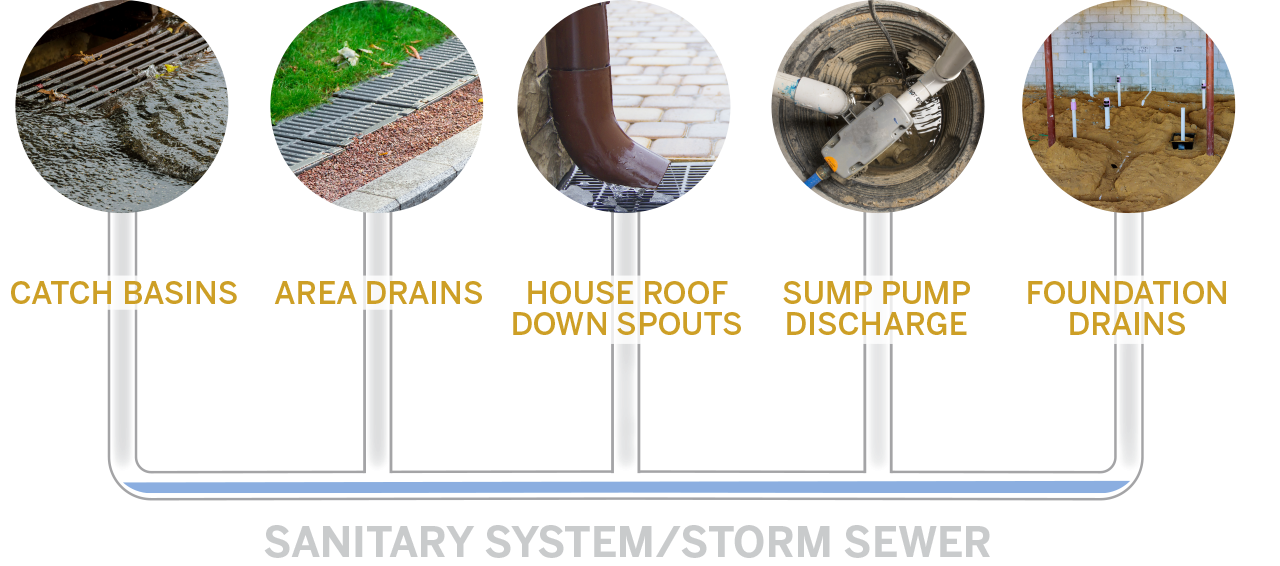
2. What is smoke testing?
Smoke testing involves pushing a simulated, non-toxic smoke (similar to products used at concerts and theater venues during live performances) through a community’s sanitary sewer collecting system, then observing and documenting where the smoke exits. This method for identifying I&I typically involves residential, commercial and industrial areas.
Field technicians set up a blower over a neighborhood manhole, and non-toxic smoke is pumped through the sewer line. The exiting smoke can indicate the location of a broken sewer pipe, manholes, catch basins, or where roof or foundation drains are connected to the sewer system.
Ultimately, smoke testing helps identify where inflow is entering the system.
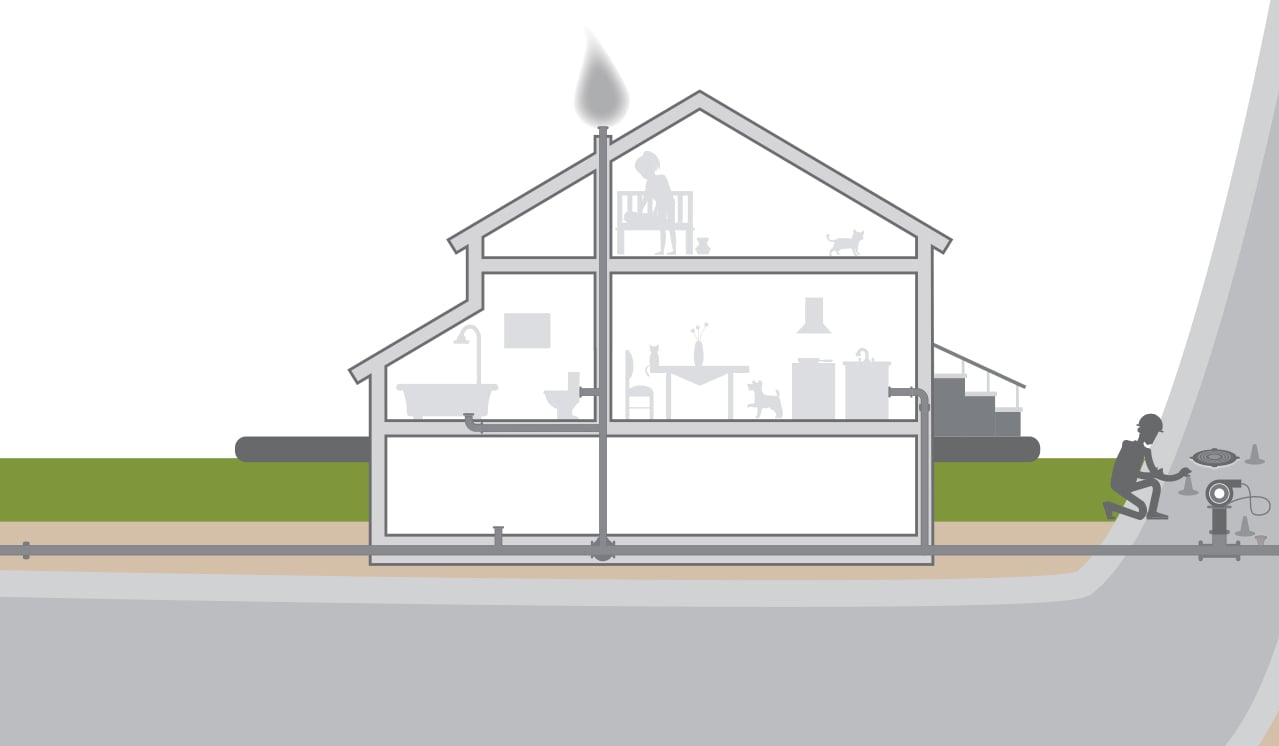
3. Is the smoke from this type of test hazardous?
Not in the slightest! The odorless, colorless simulated smoke will not cause a fire or explosion and isn’t hazardous or flammable. As noted previously, this “smoke” is akin to what you see at concerts and other live events.
Simulated smoke should disappear quickly. However, it’s encouraged to avoid unnecessary exposure to the smoke; extended exposure may cause some skin irritation.
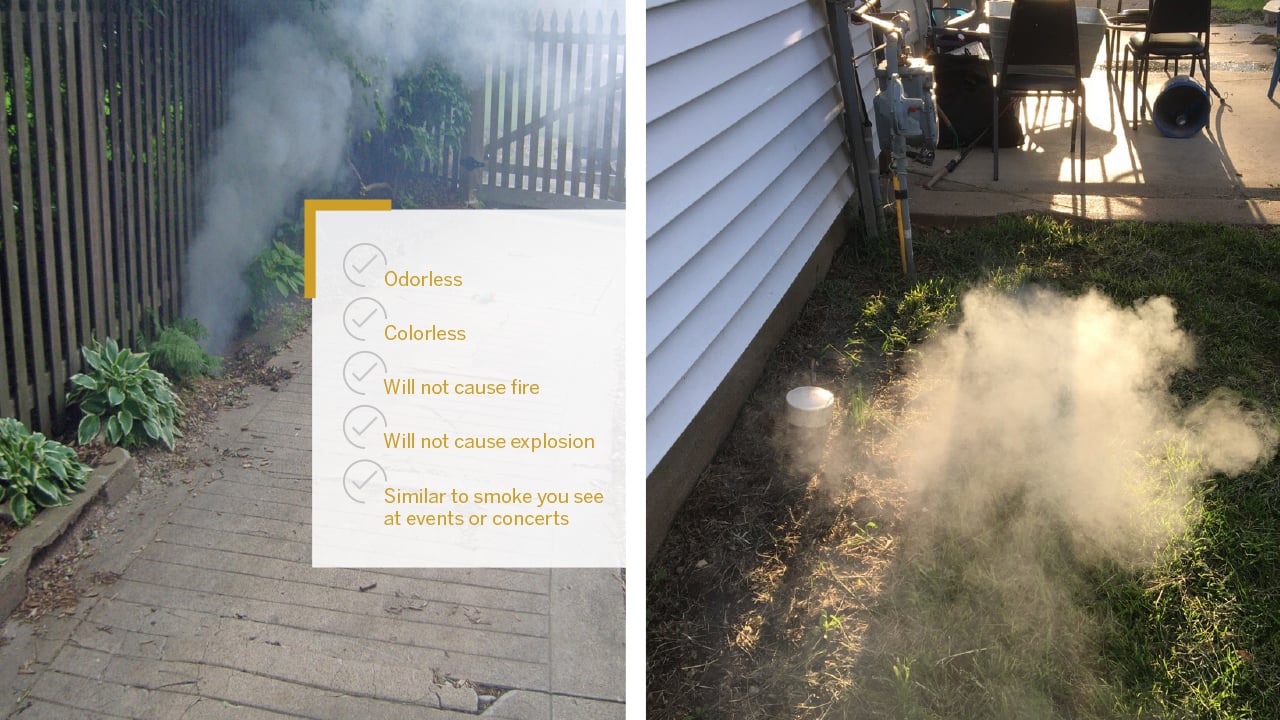
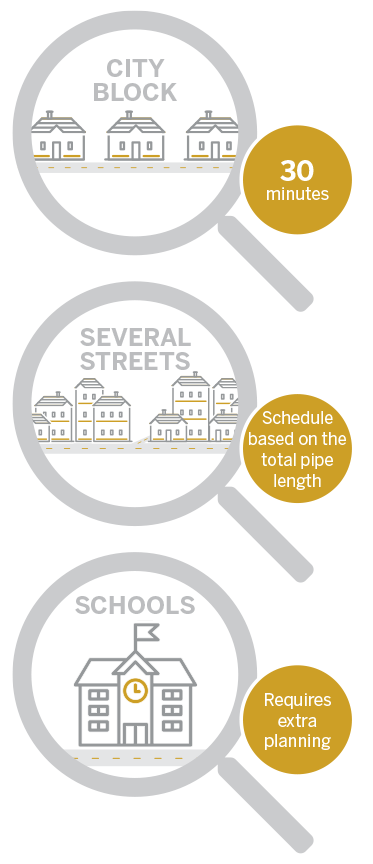
4. How long does the testing process take?
For a single city block, smoke testing lasts approximately 30 minutes. Residents may see the simulated smoke emerging from manhole covers, storm drains, roof vents or building foundations.
For an entire smoke testing project that spans several streets in a neighborhood or an entire community, the engineers and technicians conducting the testing will develop – then communicate to the public – a schedule based on the total pipe length and configurations.
Certain locations, such as schools, require extra planning before the process can take place. At SEH, we seek to schedule smoke texting at schools during summer when class isn’t in session. During the summer months, technicians can also isolate areas to test and see how it impacts the public.
It’s very important to have a plan in place before a specific area is tested, to communicate with residents, and to isolate the sanitary sewer sections being tested to reduce impacts to residents during testing.
5. How can we (residents) prepare for smoke testing?
Community leaders should inform residents of planned smoke testing at least six weeks prior to testing taking place. This proactive notice provides residents with the opportunity to process all information and prepare.
For open drain traps, basement bathrooms and floor drains, we often encourage residents to pour a gallon of water in each (which will create a small pool of water in the fixture trap) to prevent smoke from entering the house. Outside of the smoke testing, property owners should do this regularly to relieve the potential of sewer gas entering homes.
Two weeks before the testing, a public meeting or virtual event should be held to provide residents with the opportunity to ask questions and voice concerns.
Another option is to create a community website, send emails or use local government Facebook pages/community groups to engage residents.
In the days leading up to testing, another way to communicate what’s ahead is to have field crews walk the neighborhoods and place flyers in resident mailboxes. These flyers provide information about the tests, tips to prepare and numbers residents can call with any questions. Residents should be informed that they should expect to see these crews around the neighborhood.
6. Will smoke enter my house? What should we do if it does?
The smoke from smoke testing should not enter homes or buildings. However, do not be alarmed if it does. As noted previously, the smoke is not toxic. Property owners are encouraged to simply open their doors and windows to ventilate the area. Simulated smoke should clear out quickly and will not stain walls or furniture or leave residue. The smoke is safe, but long exposure may cause irritation.
If smoke does enter a home from the inside (basement drains, etc.), residents should be advised to contact a licensed plumber to find out if there is a sewer connection problem. To be proactive in preventing smoke from entering their homes, encourage residents to run water faucets for a few seconds in unused sinks, tubs and drains in order to fill fixture traps and pour water into each floor drain (at least a gallon).
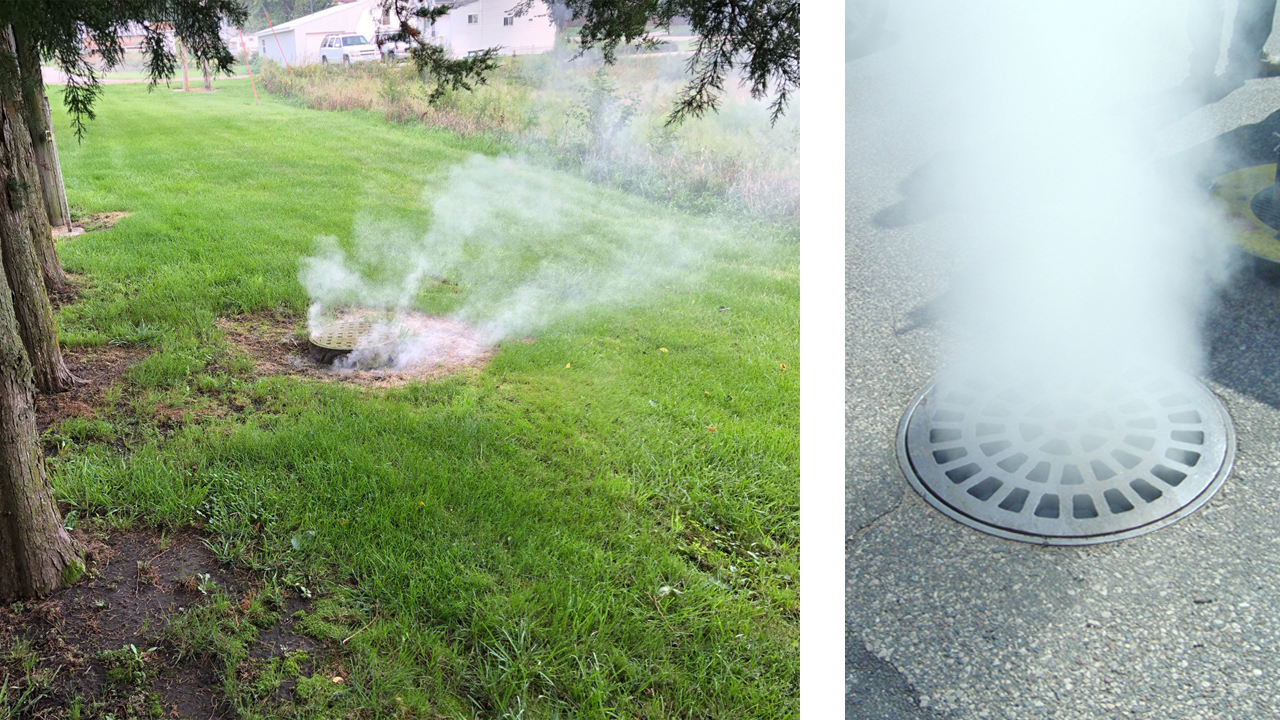
7. Will the city enter my home?
Neither the city nor the crew that performs smoke testing will enter your home during the testing process. However, if smoke is found in your home, you can request they enter to determine where the smoke is entering from.
City officials and project teams can have helpful, educational conversations with residents regarding smoke arising from within homes, but residents will likely need to connect with a licensed plumber to fix faulty issues.
8. Will first responders be on standby in case of emergency?
Smoke testing teams and/or city staff need to inform local fire and police departments of planned testing, so that they can be on notice and educate residents if calls related to smoke testing arrive. Smoke testing will not create an emergency situation, but first responders can provide additional education, assurance and guidance.
About the authors

Lindsey Roberts McKenzie, PE* is a senior water resources engineer and project manager with 15+ years of I&I experience. She specializes in hydraulic and hydrologic analyses; watershed modeling; floodplain management and flood risk reduction; and the design of large-scale stormwater management projects.
*Registered Professional Engineer in MN, NE, ND, SD

Paul Kubesh is a water resources technician, hydrologist and SEH’s senior lead I&I technician with 20+ years of experience. His primary responsibilities include conducting flow metering for I&I projects, leading smoke testing and dye testing projects, and undertaking sewer system evaluation surveys.


